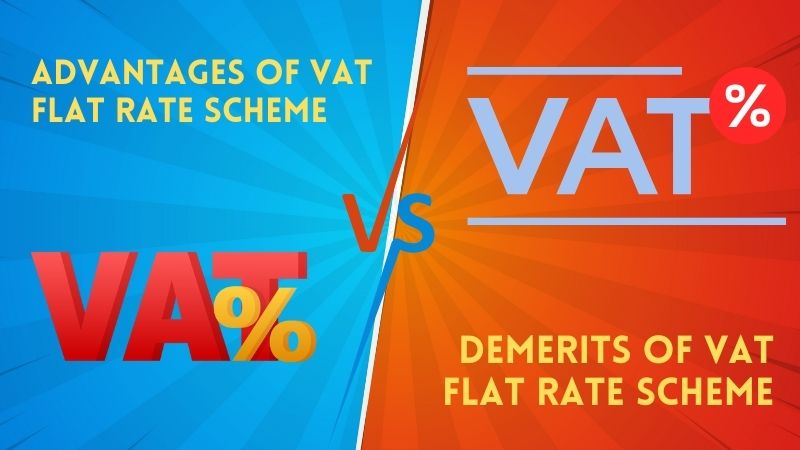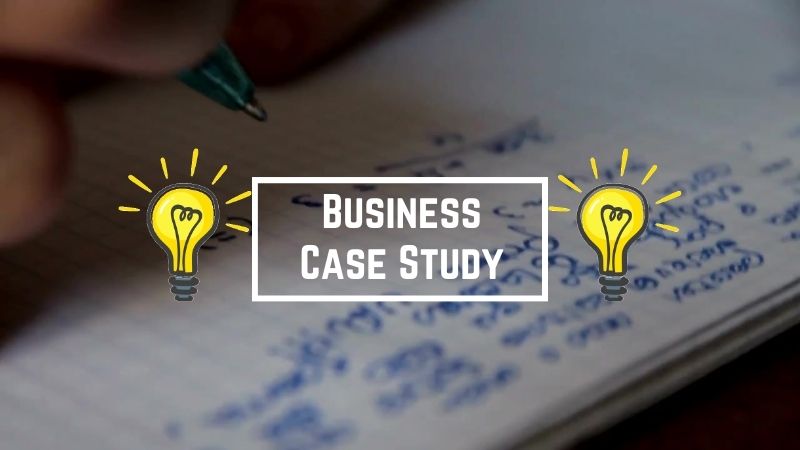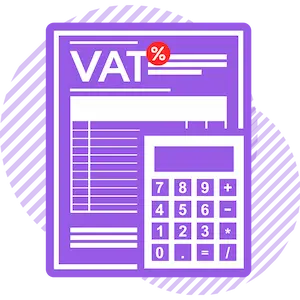Venture capitalists know the thrill and challenge of business are similar, especially when it comes to taxation. Of all of the many fiscal components required of UK businesses, Value Added Tax (VAT) stands out amongst them – particularly its Flat Rate Scheme (FRS), and here we shall investigate it further as part of this blog post’s goal to discuss and assess its potential benefits for your UK business. Regardless of whether you are an established entrepreneur or new start-up owner, understanding VAT schemes will have an effectful influence over its financial health.
Understanding the VAT Flat Rate Scheme
The UK Government introduced the VAT Flat Rate Scheme with the goal of simplifying and streamlining VAT accounting for small businesses. Instead of recording all VAT transactions individually, businesses utilizing FRS pay one fixed rate of VAT directly to HMRC while keeping any difference between what they charge customers and what is owed HMRC. It offers simplicity and ease; but is it right for your business?
Eligibility for the Flat Rate Scheme (FRS) depends upon having an annual VAT turnover (that is, sales inclusive of VAT) that does not exceed £150,000. Designed specifically with small businesses in mind, it makes the often complex world of taxation a bit simpler for them. Calculating VAT using this system involves applying a fixed rate that depends on your business sector based upon turnover – with less of an impact due to not reclaiming VAT from purchases than standard VAT rate calculation methods – thus simplifying things further. Although seemingly straightforward and simple enough in concept – its application may not work perfectly for everyone despite its benefits!
Advantages of VAT Flat Rate Scheme

As a small business owner, you may find yourself torn between making strategic growth decisions and the administrative work associated with financial paperwork. Here’s where the FRS shines brightest; record keeping under this scheme for VAT record keeping is much less complex so that you can focus on what matters more – your core operations.
The FRS could also greatly reduce the time and effort your business invests in managing VAT. By eliminating the requirement to record each sale or purchase that incurs VAT, your administrative load is greatly reduced – giving way to simpler VAT accounting processes instead.
Yet the FRS offers more than convenience; there may also be potential profit. If your business incurs only minimal VAT-able expenses or predominantly deals in zero-rated or exempt supplies, using this scheme could prove beneficial; in certain circumstances you could charge customers 20% VAT while paying HMRC only a lower flat rate and potentially making significant profit gains from doing so.
FRS can also help facilitate more accurate financial forecasting by eliminating variable rates associated with standard VAT accounting, providing greater financial certainty and enabling more precise planning. By eliminating them entirely, FRS offers greater financial certainty for forecasting. Furthermore, its fixed rate approach provides clarity and facilitates more precise financial planning.
However, these advantages must be carefully weighed against their potential drawbacks. Just as not every key fits every lock properly, not all businesses may find FRS suitable. Learning its intricacies before taking the leap is vitally important.
Drawbacks of the VAT Flat Rate Scheme
Although the simplicity and potential profitability of the VAT Flat Rate Scheme seem appealing, it’s important to remain grounded by reality. Just like any financial decision, there may be drawbacks to consider before committing.
First and foremost, the FRS places restrictions on your ability to reclaim VAT on purchases. While standard VAT allows businesses to recoup VAT for most goods and services they purchase for business use, the FRS only permits this in certain instances; typically for capital asset purchases over £2,000. This could present significant obstacles if your business incurs significant VAT-able costs.
Another potential downside of the FRS lies in its nature; it doesn’t apply equally to all business types – particularly those incurring high VAT expenditure or operating in industries with lower flat rates – so certain enterprises might find themselves worse off under this scheme.
Additionally, overpaying VAT can be a risk. If you offer zero-rated or exempt goods and services, this could cause overpayment as all sales must still be accounted for, not only those considered standard-rated.
Unexpected changes to your business’s flat rate percentage could cause your VAT bill to balloon, throwing an unpredictable wrench into budget planning and adding unpredictability into financial forecasting.
Case Studies

To further illustrate the potential impact of the VAT Flat Rate Scheme, let’s review two case studies. These highlight its varying effects across a spectrum of business types.
Case Study A: Success Story
Consider the example of a small graphic design company with an annual turnover of £100,000. Their VAT flat rate scheme of 12% allows them to navigate their fiscal environment with relative ease and has proven invaluable throughout their journey.
This scheme’s main benefit for this firm has been significant time and money savings on VAT compliance. Instead of spending hours agonising over tedious computations and meticulous records, the firm now enjoys an easy accounting process with less complications; like moving from stormy seas to tranquil ones.
Furthermore, the company now has a much clearer idea of its VAT costs, eliminating unexpected financial surprises. Furthermore, its cash flow has improved as upfront VAT payments no longer have to be made immediately. Indeed, for this graphic design firm the VAT Flat Rate Scheme has proven incredibly comforting by successfully decreasing time, money and administrative headaches.
Case Study B: Contrasting Case
However, when considering the case of a small manufacturing company with an annual turnover of £120,000 and an extremely lower VAT flat rate of 10%, things take an unexpected turn. They found the VAT Flat Rate Scheme more discordant than harmonious.
On one hand, this scheme did ease VAT compliance for my company and save time – but every rose has its thorn.
On the downside, however, this company found itself paying more VAT than would have been anticipated under traditional methods of calculating VAT – much like taking an easier path only to find it cost more in toll fees and cash flow became tight due to upfront VAT payments. Therefore, the VAT Flat Rate Scheme turned out more like an onerous symphony for this manufacturing firm rather than providing light relief.
Drawing Comparisons
These case studies highlight the varied effects of the VAT Flat Rate Scheme on different businesses. Like notes in music, its success largely depends on factors like business size, type and industry as well as amount of VAT it incurred.
No matter their experience, one cannot dispute that the VAT Flat Rate Scheme offers small businesses several advantages. As with selecting instruments for musical compositions, it is crucial that businesses carefully assess all of its possible pros and cons before joining this orchestra of schemes – each must create its own fiscal melody!
Assessment of Whether the VAT Flat Rate Scheme Is Appropriate for Your Business
Selecting the VAT Flat Rate Scheme is like finding the perfect hat: it requires taking into account style, comfort and occasion. In this instance, these considerations relate to your business size, structure, the volume of VAT-able purchases/sales and industry in which it operates – these elements should represent style, comfort and occasion respectively.
Consider your business’s size and structure carefully when making this decision. Small businesses without significant VAT-able expenses may find the FRS an ideal way to manage expenses; however, for larger organizations or those anticipating rapid expansion it could prove less ideal.
Examine the purchases and sales that fall within VAT-able categories. If your business regularly handles zero-rated or exempt goods and services, further consideration of FRS could be in order. Likewise, substantial VAT expenses incurred could sway your decision away from it altogether.
Industry plays a role as well. Each sector has a different flat rate percentage; depending on your type of business and nature of operations, your FRS could benefit or penalise accordingly.
Making the appropriate VAT selection can be both emotional and financial decisions. Choosing a VAT provider shouldn’t just be about numbers on a ledger; it should provide peace of mind and confidence in managing your business finances. Seek professional guidance to assist in this crucial decision – after all, early action saves nine!
How to Register for the VAT Flat Rate Scheme (VRS)
Preparing to register for the VAT Flat Rate Scheme (VRS) can be likened to planning an important event: with numerous steps and documents needed for registration as well as deadlines that need meeting, success should come easily with proper guidance and planning. Below is your step-by-step guide:
Step 1: Determine Eligibility
Just like a custom-tailored suit, the VRS meets certain criteria. You can register for it if:
- Your taxable turnover (excluding VAT) in the next year will be £150,000 or less, akin to holding a ‘small business’ ticket to the VRS event.
- Your business is not ‘associated’ with another business, ensuring the event is not oversubscribed.
- You are not a member of a VAT group, to avoid duplicate invitations.
- You are not a landlord or property developer, as they follow a different dress code.
Step 2: Complete the VAT600 FRS form
Assuming you passed the eligibility test, the next step should be filling out a VAT600 FRS form; think of it as your RSVP to VRS parties! You can download this form from GOV.UK; be sure to fill it in accurately to avoid potential misunderstandings or mishaps with VRS parties.
Step 3: Submitting Your Form
After filling out and completing your form, submit it by email, post, or fax for submission to HMRC VRS event organiser. Imagine sending your invite confirmation.
Step 4: Wait for HMRC Approval.
After submission, HMRC typically approves your application within two weeks – take some time out of your schedule to relax with a virtual cup of tea while waiting.
Step 5: Begin Paying VAT at a Flat Rate Percentage
Once you receive an invitation (approval), VAT payments should begin immediately at a flat rate percentage. As with any event, keeping track of attendance (and purchases and sales records in this instance) to calculate an accurate VAT payment total.
Additional Points to Remember
- You can only register for the VRS once a year, much like an annual celebration.
- Leaving the VRS is an option, but you’ll have to pay VAT at the standard rate for the rest of the year, similar to switching parties midway.
- An exceeding taxable turnover of £150,000 in a year leads to automatic removal from the VRS, like outgrowing an age-specific event.
Conclusion
VAT can be a difficult thread to manage for small businesses, yet its effects can have far-reaching repercussions. One such tax policy option that has the potential for profit and simplicity could be the VAT Flat Rate Scheme – though it has its limitations and potential pitfalls that must be carefully considered before opting in or out.
Understanding your company’s individual circumstances – its industry, size, structure and volume of VAT-able transactions – is critical to making an effective choice of FRS for your business. For some firms it may serve as a familiar melody while for others it might create discordant sounds within an otherwise harmonious symphony.
No amount of blog content can replace the advice and expertise a financial advisor can provide. Each business is different and faces its own set of unique challenges and strengths; understanding the intricacies of the VAT Flat Rate Scheme is one way of making sure your finances run smoothly; ultimately it should provide peace of mind, financial security, and freedom to focus on making your business thrive – ultimately this journey should provide peace of mind, financial stability and focus. Ultimately it all boils down to informed decision-making which helps steer its ship.

